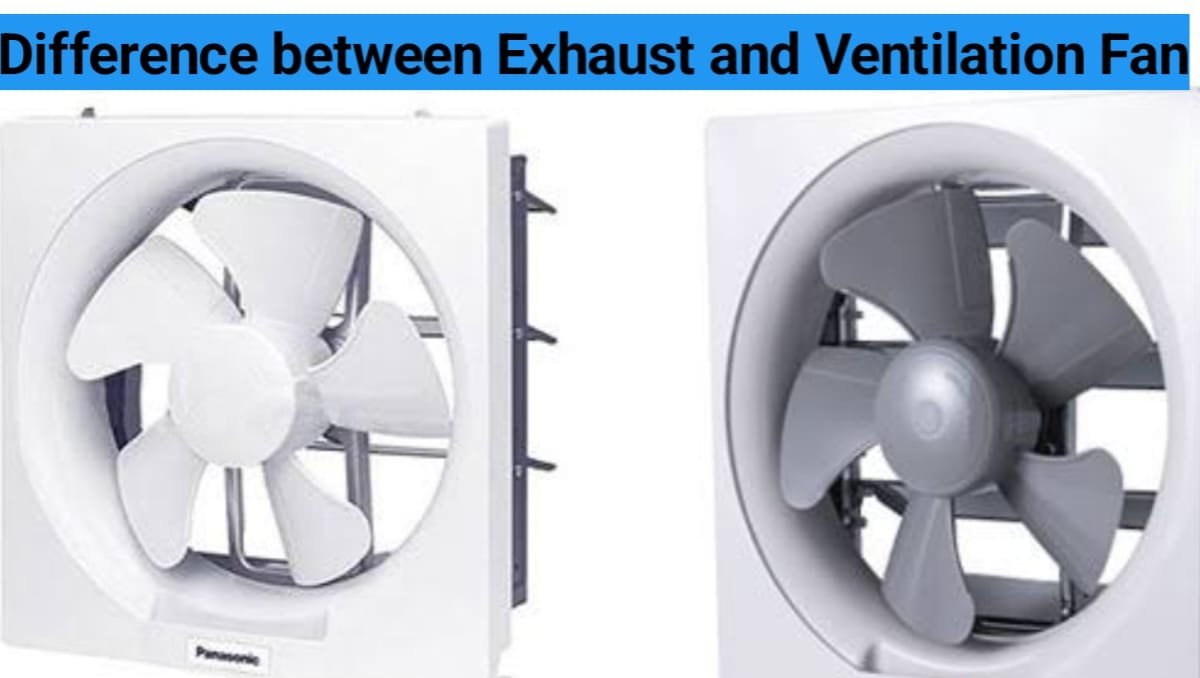
In homes and commercial buildings alike, proper air circulation is crucial for maintaining indoor air quality and controlling humidity levels. Two common fixtures used for this purpose are exhaust fans and ventilation fans. While they may seem similar in function, they serve distinct roles in maintaining a healthy indoor environment. Understanding their differences and applications can help homeowners and building managers make informed decisions about their ventilation needs.
Exhaust Fans:
Exhaust fans are specifically designed to remove stale air, odors, moisture, and pollutants from a specific location, such as a bathroom, kitchen, or utility room. They operate by drawing air out of an enclosed space and expelling it outside the building. Exhaust fans are typically installed in areas where moisture or fumes accumulate, helping to prevent mold growth, improve indoor air quality, and maintain comfortable humidity levels.
Key Features of Exhaust Fans:
- Single Point Extraction: Exhaust fans are localized ventilation devices, meaning they are installed in specific areas where air extraction is needed. They are effective at removing contaminants directly from the source.
- Purpose-built Design: These fans are optimized for efficiency in removing specific types of air pollutants, such as steam from showers or cooking odors from kitchens.
- Airflow Direction: The primary function of an exhaust fan is to push air outward from a room or enclosed space, ensuring that unwanted air is expelled outside the building.
- Size and Power: Exhaust fans vary in size and power depending on the space they are intended to ventilate. Larger fans are capable of moving more air and are suitable for larger rooms or areas with higher moisture levels.
Applications of Exhaust Fans:
- Bathrooms: To remove moisture and odors from showers and baths, preventing mold and mildew growth.
- Kitchens: To eliminate cooking fumes, steam, and food odors.
- Laundry Rooms: To reduce humidity and moisture from washing machines and dryers.
- Workshops and Garages: To ventilate spaces where fumes from paints, solvents, or machinery may accumulate.
Ventilation Fans:
Ventilation fans, on the other hand, are more general-purpose devices designed to improve overall air circulation throughout a building or specific areas within it. Unlike exhaust fans, which expel air from a space, ventilation fans work by circulating air, often in conjunction with other HVAC systems, to maintain consistent airflow and distribute conditioned air evenly.
Key Features of Ventilation Fans:
- Air Circulation: Ventilation fans are used to move air within a building, promoting even distribution and maintaining air quality.
- Comprehensive Air Quality Control: They contribute to the overall ventilation strategy of a building, working alongside HVAC systems to optimize indoor air quality and temperature.
- Versatile Applications: While they can be used in bathrooms and kitchens, ventilation fans are also suitable for larger spaces such as living rooms, offices, and commercial buildings where continuous air circulation is necessary.
- Integration with HVAC Systems: Ventilation fans may be integrated into larger HVAC systems to enhance efficiency and reduce energy consumption by ensuring that conditioned air is circulated effectively.
Applications of Ventilation Fans:
- Whole House Ventilation: To ensure fresh air circulation throughout all rooms in a house, reducing stale air and improving indoor air quality.
- Commercial Buildings: To maintain consistent airflow and air quality in offices, retail spaces, and other commercial environments.
- Industrial Settings: To aid in controlling temperature and air quality in manufacturing facilities and warehouses.
Choosing Between Exhaust Fans and Ventilation Fans:
When deciding between exhaust fans and ventilation fans, it’s essential to consider the specific needs of the space in question. For localized air removal and moisture control in areas like bathrooms and kitchens, exhaust fans are typically the preferred choice due to their targeted functionality. In contrast, ventilation fans are ideal for larger-scale air circulation and maintaining overall indoor air quality throughout a building.
Both types of fans play crucial roles in creating a comfortable and healthy indoor environment. Integrating them effectively into a building’s ventilation system can contribute significantly to energy efficiency, occupant comfort, and the longevity of the structure by preventing moisture-related damage and improving air quality. By understanding the differences outlined above, homeowners and building managers can make informed decisions when selecting and installing ventilation solutions tailored to their specific needs.








